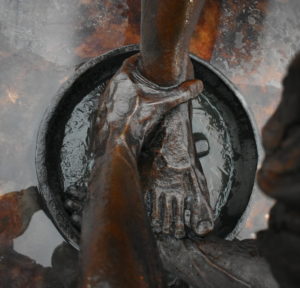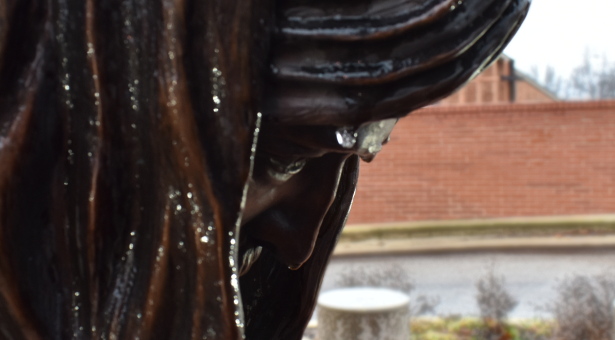Written by Josiah Mohr. Media by Cord Buchanan.

I am going to be blatantly honest with you right now: the modern church has a problem. Let’s take a moment to consider the weight of that statement. Some people would say with fervor, “Of course the church has a problem. We’ve easily got ninety-nine problems, but I most certainly am not one of them.” And yet others would be apologetically defensive, claiming, “It’s not the church that has a problem. It’s this crooked and perverse generation that has all the problems.” After the dust settles from that inconsequential argument, I would like to affirm both claims. Yes, our culture does have a problem, but the church is a contributing party. And there is a chance that you actually are that one-hundredth problem. Let me be clear, this is not some “fire and brimstone” sermon about the iniquities of a sinner, nor do you have to worry about “throwing hands” with an angry God, but do consider this to be a very necessary awakening. If you got that reference, Jonathon Edwards would be very proud of you. But what this is, to be honest is just that: an honest theological discussion about where my perception, your perception, and the church’s perception of diversity falls drastically short of the standard of the Gospel.

Media from Cord Buchanan
Much of the discussion surrounding diversity has been focused on how American communities can function together in diversity. However, I have observed that this conversation has been significantly absent from many church congregations. Addressing the absent conversations about unity in diversity within the church, I believe, will allow Christians to better understand how diversity should function in our American society as a whole. For many Christians, the lack of unity in diversity within the church prohibits a full and appropriate acceptance, understanding, and response to the pervasive prejudice against diversity that exists in the general American society.
So to begin, I would like you to close your eyes and imagine a vast landscape. Imagine a beautiful vista from which you can see a valley below covered entirely with a canopy of trees, overflowing onto the backdrop of a mountainside. With that perspective in mind, let’s consider something else. Let’s imagine you’re in a lush forest, with sequoias towering above and shrubbery in the undergrowth. Allow me to pose some questions to you. Which perspective is invalid? Which perspective is superior, more detailed, more beautiful, more inspiring, more opportune, a worthier way to describe the beauty of the valley? I almost guarantee that in return you’ll ask me, “Why did you just have me daydream all that? What does that have to do with the unity in diversity of the church?” So, how do two truly unique perspectives of the same landscape relate to a theological case for Christian unity in diversity?

This is ultimately a lesson that is delivered by the construction of the New Testament. The New Testament opens with the pivotal story of Jesus Christ as the Savior, presenting stories so critical to the message of the Gospel. Yet what many modern Christians fail to acknowledge is the existence of not one or even just two, but four separate and unique gospel books detailing the story of Jesus. I would like you to reimagine the landscapes from earlier and to ask the very same questions of the four gospels: Matthew, Mark, Luke, and John. Could one perspective be invalid? Which perspective is superior, more detailed, more beautiful, more inspiring, more opportune, a worthier way to communicate the story of Jesus? We almost scoff at the possibility that these questions should even be considered concerning the canonized books of the Bible, let alone the proven Word of God, for all four gospels depict the same Jesus. The landscape, the characters, the stories, the miracles, the parables, the death, burial, and resurrection—all are similar enough in each of the gospels. Yet we never take the time to acknowledge the differences in the gospels. It would be heretical to try and write one gospel summary to replace them all, for each gospel does present an infallible description of Jesus and His Gospel. The same can be said of the previous pair of images of nature. They are multiple depictions of the same valley, yet neither is a wrong description of the valley. As with each of the Gospels, there are godly truths in both perspectives of the valley.
Just as we have considered the Gospels and the natural landscape, so too should the church consider its own divisions. Divisiveness in the church is primarily caused by our incompetency to consider the truth in someone else’s perspective. The denominations and divisions of the modern church are certainly proficient at accusing each other, but they take no time to evaluate the truth of God in the other’s perspective. If we are to accept that all truth is God’s truth, then we are required to consider and communally discern the truth of God in the perspective of every Christian community, just as it is exemplified in the diversity of the story of Jesus. It is in this diversity that the church can find unity, modeled directly off of the inclusion and use of four unique and diverse gospels.

It is only by coming to an understanding of unified diversity within the church that the issues of prejudice can be addressed. For in the conversations (not debates or arguments) surrounding diversity in our culture as a whole, we must refer to the direct example of the four-fold landscape of the life of Jesus to fully and appropriately acknowledge, understand, and participate. Just as a full picture of Jesus can only be gained by turning the pages of the Bible to each of the four gospels, a full understanding society requires us to look for and validate other perspectives. For only then will we understand the truth of someone else’s experience. We do indeed live in a beautiful landscape, but it always takes effort to see another’s perspective. In order to understand the perspective of the trees from the forest floor, you will have to come down off of the mountain, and maybe then you will gain a better understanding of the powerful mountain you have been living on.




























